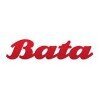Filter interviews by
H&M HSE Officer Interview Questions and Answers
H&M HSE Officer Interview Experiences
2 interviews found
(2 Questions)
- Q1. Poiuytrep8rewertyuiopoiuytre
- Q2. [poiuytreapoiuytrewertyui
Interview Preparation Tips
Good and easy solvable
The questions was very easy
(2 Questions)
- Q1. Which language familiar
- Q2. What role do you need
- Ans.
The role I need is that of an HSE Officer, responsible for ensuring health, safety, and environmental compliance in the workplace.
Implementing and enforcing safety policies and procedures
Conducting regular safety inspections and audits
Providing safety training to employees
Investigating accidents and incidents to determine root causes
Maintaining records of safety incidents and compliance measures
(2 Questions)
- Q1. Self intro about you
- Ans.
I am a dedicated HSE Officer with a strong background in implementing safety procedures and protocols to ensure a safe work environment.
I have a Bachelor's degree in Occupational Health and Safety
I have experience conducting safety inspections and audits
I have implemented training programs for employees on safety protocols
I have a strong understanding of OSHA regulations and compliance
- Q2. Where can we see you next 5 years
- Ans.
In the next 5 years, I see myself advancing in my career as an HSE Officer, taking on more responsibilities and contributing to the overall safety culture of the organization.
Continuing to enhance my knowledge and skills in health, safety, and environmental regulations
Leading and implementing various safety programs and initiatives within the company
Working towards obtaining relevant certifications and qualifications i...
Interview questions from similar companies

(2 Questions)
- Q1. Why you want to work in Puma?
- Q2. Boz am into sports that's why I want to join Puma & they thay have the best sport's brand in the world with my favourite sports brand ambassadors and celebrity brand ambassadors.
(1 Question)
- Q1. Same question and lot more


(2 Questions)
- Q1. About previous company
- Q2. Store function and sops

I applied via Walk-in and was interviewed before Jan 2021. There was 1 interview round.
Interview Questionnaire
3 Questions
- Q1. Why are you choose this propesson
- Q2. What is environment
- Ans.
Environment refers to the natural and physical surroundings in which an organism or community exists.
Includes living and non-living components
Can be affected by human activities
Examples: air, water, soil, plants, animals
Can be local or global in scale
- Q3. Incase your company is not accept hse conditions how to convene
Interview Preparation Tips

I applied via Recruitment Consultant and was interviewed in Jan 2021. There were 3 interview rounds.
Interview Questionnaire
1 Question
- Q1. Shutdown related oil and gas basic and own decision making questions like confined space, lifting, permit to work, hot work.
Interview Preparation Tips

Interview Questionnaire
3 Questions
- Q1. What is Hira , height work,hot work.
- Q2. What is jsa
- Ans.
JSA stands for Job Safety Analysis. It is a process of identifying potential hazards and risks associated with a particular job or task.
JSA involves breaking down a job into individual steps
Each step is analyzed to identify potential hazards and risks
Preventive measures are then identified and implemented to minimize or eliminate the risks
JSA is commonly used in industries such as construction, manufacturing, and oil a...
- Q3. Lowering lifting work
Interview Preparation Tips
Thanks
Skills evaluated in this interview

I applied via Recruitment Consultant and was interviewed in Oct 2019. There was 1 interview round.
Interview Questionnaire
22 Questions
- Q1. 1) tell me about your self,
- Q2. 2) As a safety officer your Responsibility,
- Ans.
As a safety officer, my responsibility is to ensure the workplace is safe and compliant with health and safety regulations.
Conduct regular safety inspections and audits
Develop and implement safety policies and procedures
Provide safety training to employees
Investigate accidents and incidents to determine root causes
Ensure compliance with health and safety regulations
Maintain safety records and documentation
- Q3. 3) what is Combustable material
- Ans.
Combustible material is any substance that can catch fire and burn easily.
Examples include wood, paper, gasoline, and propane.
Combustible materials are often classified by their flash point, which is the temperature at which they will ignite.
It is important to properly store and handle combustible materials to prevent fires and explosions.
Combustible materials are often found in industrial settings, construction sites,...
- Q4. Hierarchy of Hazard controls
- Ans.
Hierarchy of Hazard controls refers to a systematic approach to eliminate or minimize workplace hazards.
Hierarchy of Hazard controls is a framework used to prioritize and implement measures to control workplace hazards.
The hierarchy consists of five levels: elimination, substitution, engineering controls, administrative controls, and personal protective equipment (PPE).
Elimination involves completely removing the hazar...
- Q5. What are the steps in the hierarchy of control
- Ans.
The hierarchy of control is a systematic approach to managing workplace hazards.
Elimination: Completely remove the hazard from the workplace.
Substitution: Replace the hazard with a less hazardous alternative.
Engineering controls: Modify the workplace or equipment to reduce the risk.
Administrative controls: Implement policies, procedures, and training to minimize exposure.
Personal protective equipment (PPE): Provide pro...
- Q6. Hazard of work at a hight
- Ans.
Working at heights poses significant hazards and risks.
Falls from heights are a major risk and can result in serious injuries or fatalities.
Workers may be exposed to unstable surfaces, leading to slips, trips, and falls.
Falling objects from heights can cause head injuries or other serious harm.
Working at heights often involves working near electrical hazards, increasing the risk of electrocution.
Weather conditions such...
- Q7. What is SWL and colour coding
- Ans.
SWL stands for Safe Working Load and refers to the maximum weight a piece of equipment or structure can safely support. Colour coding is a system of using different colors to identify and differentiate objects or areas based on their specific characteristics or purposes.
SWL is an important concept in occupational health and safety, as it helps ensure that equipment and structures are not overloaded and can operate safe...
- Q8. SWL stand for safe working load.when a load is lifting by carne, following shall be checked for safe lifting. (1) total weight of load including weight of the carne hook, slings and shackles. (2) capicity...
- Q9. What is a near miss/ unsafe act/ Un safe conditions
- Ans.
Near miss is an unplanned event that could have resulted in injury, damage or loss but did not. Unsafe act is an action that increases the risk of injury or damage. Unsafe condition is a situation that increases the risk of injury or damage.
Near miss is an event that could have resulted in harm but did not
Unsafe act is an action that increases the risk of harm
Unsafe condition is a situation that increases the risk of h...
- Q10. Nearmiss : any incident that could have caused an injury, damage to property or production loss is circumstances were slightly different. / unsafe act : An action of a person that can lead to an injury, ...
- Ans.
Nearmiss, unsafe act, and unsafe condition are all potential hazards that can lead to injury, damage to property, or production loss.
Nearmiss refers to an incident that could have caused harm if circumstances were slightly different.
Unsafe act is an action by a person that can lead to harm.
Unsafe condition is a situation that may lead to harm.
Examples of nearmiss include a worker almost falling from a height, a machine...
- Q11. Why is near miss reporting important
- Q12. What is risk / hazard
- Ans.
Risk/hazard refers to potential dangers or threats that can cause harm or damage to people, property, or the environment.
Risk is the probability of an event occurring and the potential consequences associated with it.
Hazard is a potential source of harm or danger that can cause an adverse effect.
Risks and hazards can be physical, chemical, biological, ergonomic, or psychosocial in nature.
Examples of risks/hazards inclu...
- Q13. Risk : risk is defined as the product of the probability of a hazard resulting in an adverse event, times the severity of the event. Risk= likelihood of occurrence × severity if incident occurred. / HAZA...
- Ans.
Risk is the product of the probability of a hazard resulting in an adverse event, times the severity of the event.
Risk is calculated by multiplying the likelihood of an adverse event occurring by the severity of the event.
Hazards are anything that has the potential to cause harm.
If there is no hazard, there is no risk.
Examples of hazards include chemicals, machinery, and environmental factors.
As an HSE Officer, it is i...
- Q14. What is MSDS
- Ans.
MSDS stands for Material Safety Data Sheet.
MSDS provides detailed information about the potential hazards of a chemical substance.
It includes information about the physical and chemical properties of the substance.
MSDS also provides instructions for safe handling, storage, and disposal of the substance.
It outlines the necessary personal protective equipment (PPE) to be used when working with the substance.
Examples of i...
- Q15. MSDS is a document that gives essential information regarding a chemical products
- Q16. Loog out tag out
- Q17. Positive isolation ( inserting Blinding ) physical Disconnection close valves, double block and bleeds, electrical isolation :- opening circuit breakers, disconnection cable, removing fuses, etc./ Radi...
- Q18. What is pyrophoric material
- Ans.
Pyrophoric material is a substance that ignites spontaneously in air at or below room temperature.
Pyrophoric materials are highly reactive and can ignite without an external ignition source.
They can ignite upon contact with air, moisture, or other substances.
Examples of pyrophoric materials include white phosphorus, alkali metals, and certain organometallic compounds.
- Q19. What is confined space, scaffolding, Hot or naked flame, Excavation, sand blasting, crane operation, all following hazard and all following safety measures
- Ans.
Confined space, scaffolding, hot or naked flame, excavation, sand blasting, crane operation are all hazardous activities that require safety measures.
Confined space: Proper ventilation, gas detection, and rescue plan.
Scaffolding: Proper assembly, inspection, and use of personal protective equipment.
Hot or naked flame: Proper handling, storage, and use of fire extinguishers.
Excavation: Proper shoring, sloping, and trenc...
- Q20. What is C.S.I.D.L.H
- Ans.
C.S.I.D.L.H stands for Control of Substances Hazardous to Health. It is a set of regulations that aim to protect workers from exposure to hazardous substances.
C.S.I.D.L.H is a set of regulations in the field of occupational health and safety.
It requires employers to assess and control the risks associated with hazardous substances in the workplace.
The regulations cover a wide range of substances, including chemicals, f...
- Q21. What is incident
- Ans.
An incident refers to an unexpected event or occurrence that disrupts normal operations and may result in injury, damage, or loss.
An incident can include accidents, near misses, injuries, illnesses, property damage, or environmental incidents.
It is important to investigate and analyze incidents to identify the root causes and implement corrective actions to prevent future occurrences.
Incident reporting and documentatio...
- Q22. What is accident
- Ans.
An accident is an unexpected and unplanned event that results in harm, injury, damage, or loss.
Accidents can occur in various settings such as workplaces, roads, homes, and public spaces.
They can be caused by human error, equipment failure, environmental factors, or a combination of these.
Accidents can range from minor incidents like slips and falls to major disasters like explosions or collisions.
Prevention measures s...
Interview Preparation Tips
First important is your cv, how you prepared for clinte,
Most of the interview questions are asked by your cv refrence.
Skills evaluated in this interview

I applied via Recruitment Consultant and was interviewed before Dec 2020. There were 5 interview rounds.
Interview Questionnaire
1 Question
- Q1. How many years experience in oil&gas, what are the activities and what policy in the company.
Interview Preparation Tips
I applied via Recruitment Consulltant and was interviewed in Nov 2021. There were 2 interview rounds.

(1 Question)
- Q1. 1. Can you introduce yourself 2. What are your role in your former company 3. What are your challenges in your role 4. What do you understand by excavation, Confined Space Entry, ELCB, PTW, scaffolding, li...
Interview Preparation Tips
H&M Interview FAQs
Tell us how to improve this page.
H&M Interviews By Designations
- H&M Sales Advisor Interview Questions
- H&M Department Manager Interview Questions
- H&M Salesman Interview Questions
- H&M Software Engineer Interview Questions
- H&M Analyst Interview Questions
- H&M Software Developer Interview Questions
- H&M Sales Associate Interview Questions
- H&M Sales Executive Interview Questions
- Show more
Interview Questions for Popular Designations
H&M HSE Officer Interview Process
based on 2 interviews
Interview experience
Interview Questions from Similar Companies
H&M HSE Officer Reviews and Ratings
based on 1 review
Rating in categories
|
Sales Advisor
298
salaries
| ₹2 L/yr - ₹5 L/yr |
|
Department Manager
248
salaries
| ₹4 L/yr - ₹9 L/yr |
|
Visual Merchandiser
233
salaries
| ₹3.1 L/yr - ₹7.5 L/yr |
|
Store Manager
107
salaries
| ₹7.8 L/yr - ₹18 L/yr |
|
Sales Executive
82
salaries
| ₹1.8 L/yr - ₹5.1 L/yr |

Shahi Exports

Bata

PUMA

Biba Apparels
- Home >
- Interviews >
- H&M Interview Questions >
- H&M HSE Officer Interview Questions




















